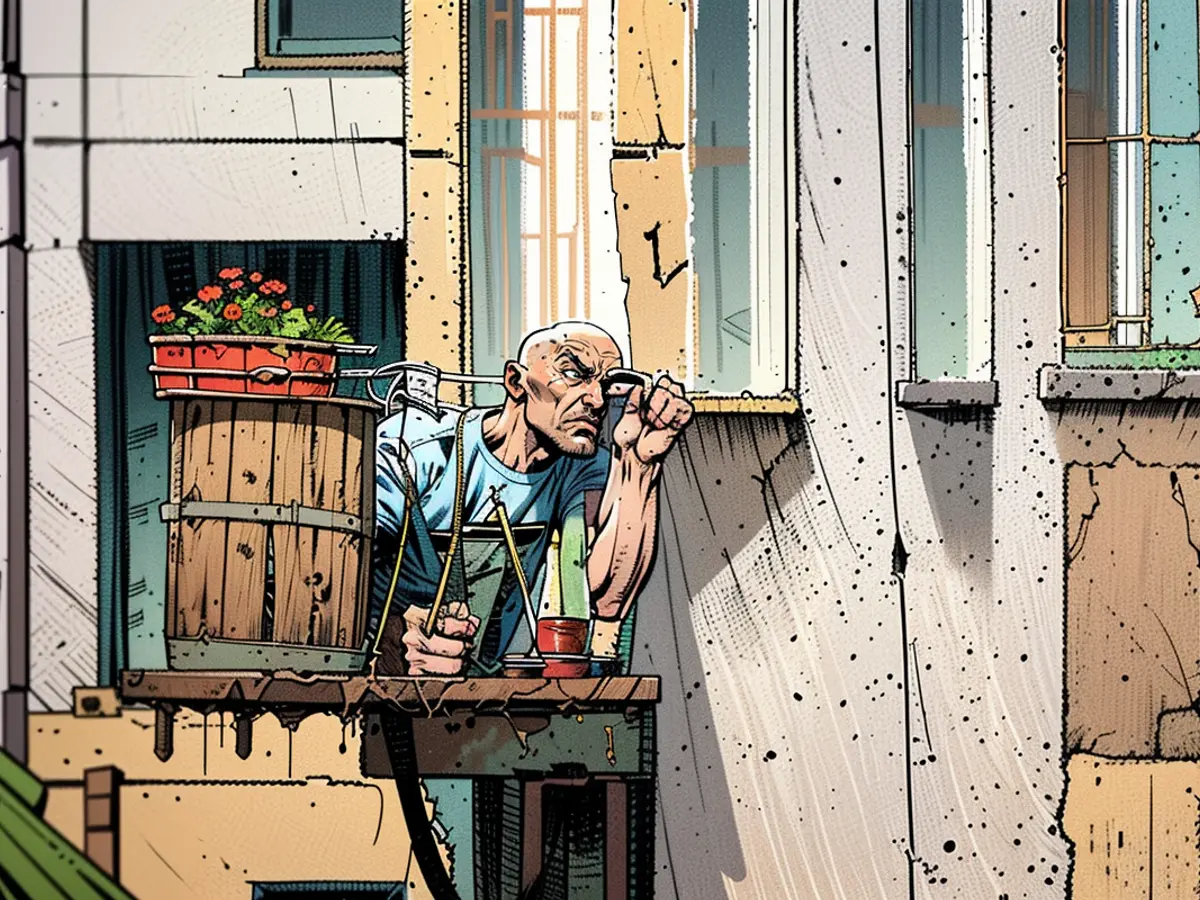Investigating Balcony Safety: What Warning Signs Should You Watch Out For?
Unfortunate incidents like the one in Hamburg serve as reminders: when balconies fail, the consequences can be devastating. In an expert's view, here's how to identify potential issues and determine when a balcony has surpassed its safe carrying capacity.
Recognizing cracks and damage can help prevent balcony collapses. But in most cases, homeowners and tenants struggle to detect any danger lurking beneath their balconies' tiled or covered surfaces.
"Although moss or algae indicate moisture penetration, it can be tough for homeowners to pinpoint the source," explains Professor Norbert Gebbeken, President of the Bavarian Chamber of Engineers-Building.
Look For Cracks From Below
Cracks in the balcony are a telltale sign, particularly during a close inspection from a lower balcony. Condensation, temperature variations, or substandard construction materials could be responsible for these cracks. If you spot significant cracks on commonly-used cantilevered reinforced concrete slabs, it's vital to stay away, alert your landlord, or consult a professional structural damage expert.
Address Overload Concerns
As a general rule, balconies can hold 350 to 500 kilograms per square meter. However, overloading the balcony can occur when the area is used for unintended purposes, such as setting up a wading pool or hosting multiple persons at once. A balancing act is needed to avoid exceeding the balcony's weight limit.
Regular Inspections are Key
Although German homeowners aren't required to conduct regular balcony inspections unless prompted by a specific reason, experts recommend inspecting the balcony every ten years, following the VDI 6200 guideline of the Association of German Engineers. Regular inspections help identify any underlying issues and ensure the area remains safe for use.
Seek Expert Assistance
It's essential to be familiar with potential warning signs that call for an inspection by a structural damage expert. Look for visible cracks, structural movement, signs of dampness, or any other issues that may compromise your balcony's safety.
By adhering to these guidelines, homeowners and tenants can ensure their balconies remain safe and functional, preventing unfortunate incidents.
Related Reads:
Enrichment Data:
Enrichment Insights:
- Water Stains and Dampness: Water stains, dampness on ceilings or walls, and wet floor coverings suggest potential condensation or leakage issues. Regular balcony inspections can help detect leaks bund beforewater damages the underlying structure.
- Visible Cracks and Damage: Concrete, tiles, and grout cracks can cause water intrusion, weakening the structural integrity of balconies over time. Additionally, loosened or wobbly glass panels can indicate an underlying structural issue.
- Poor Drainage and Ponding Water: Water pooling on balcony surfaces or around drains may be caused by inadequate drainage. Water takes longer than two days to evaporate or drain, increasing the risk of structural damage.
- Efflorescence and Moisture Damage: White, chalky efflorescence deposits on concrete or masonry usually indicate moisture issues. While they might not damage the structure right away, continuous exposure can weaken the materials over time.
- Structural Movement and Expansion Joints: Without adequate expansion joints, stress can build up in the structure, leading to cracks in the membrane and tiled surfaces. Installation of expansion joints every three meters and along the perimeter of the balcony can help decrease the risk of damage.
- Regular Inspections and Expert Assistance: Regular inspects can help homeowners and tenants catch potential issues before they worsen. Seeking expert assistance immediately is warranted if obvious warning signs, such as cracks, dampness, or signs of structural movement, are detected.





